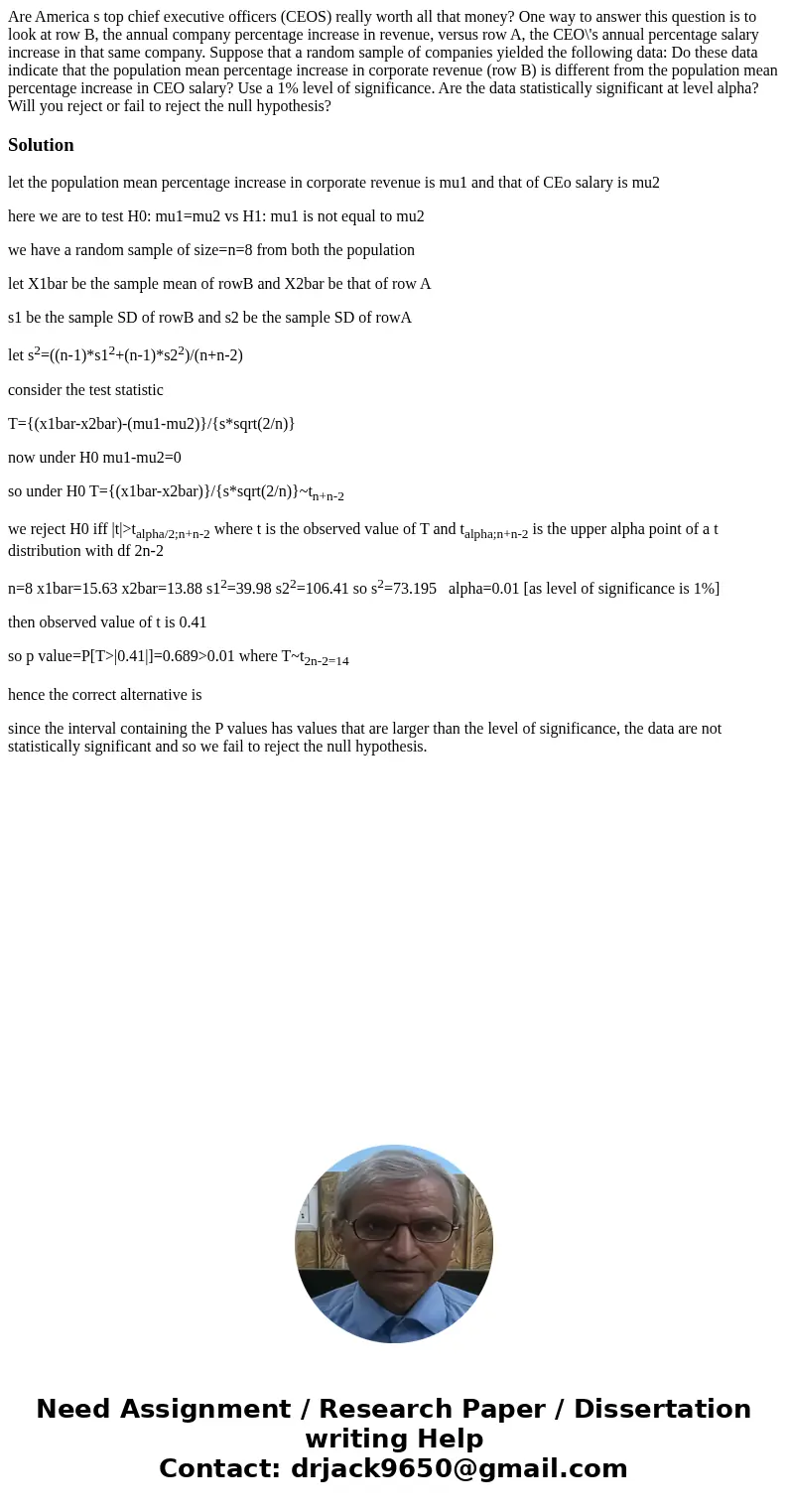Are America s top chief executive officers CEOS really worth
Solution
let the population mean percentage increase in corporate revenue is mu1 and that of CEo salary is mu2
here we are to test H0: mu1=mu2 vs H1: mu1 is not equal to mu2
we have a random sample of size=n=8 from both the population
let X1bar be the sample mean of rowB and X2bar be that of row A
s1 be the sample SD of rowB and s2 be the sample SD of rowA
let s2=((n-1)*s12+(n-1)*s22)/(n+n-2)
consider the test statistic
T={(x1bar-x2bar)-(mu1-mu2)}/{s*sqrt(2/n)}
now under H0 mu1-mu2=0
so under H0 T={(x1bar-x2bar)}/{s*sqrt(2/n)}~tn+n-2
we reject H0 iff |t|>talpha/2;n+n-2 where t is the observed value of T and talpha;n+n-2 is the upper alpha point of a t distribution with df 2n-2
n=8 x1bar=15.63 x2bar=13.88 s12=39.98 s22=106.41 so s2=73.195 alpha=0.01 [as level of significance is 1%]
then observed value of t is 0.41
so p value=P[T>|0.41|]=0.689>0.01 where T~t2n-2=14
hence the correct alternative is
since the interval containing the P values has values that are larger than the level of significance, the data are not statistically significant and so we fail to reject the null hypothesis.

 Homework Sourse
Homework Sourse